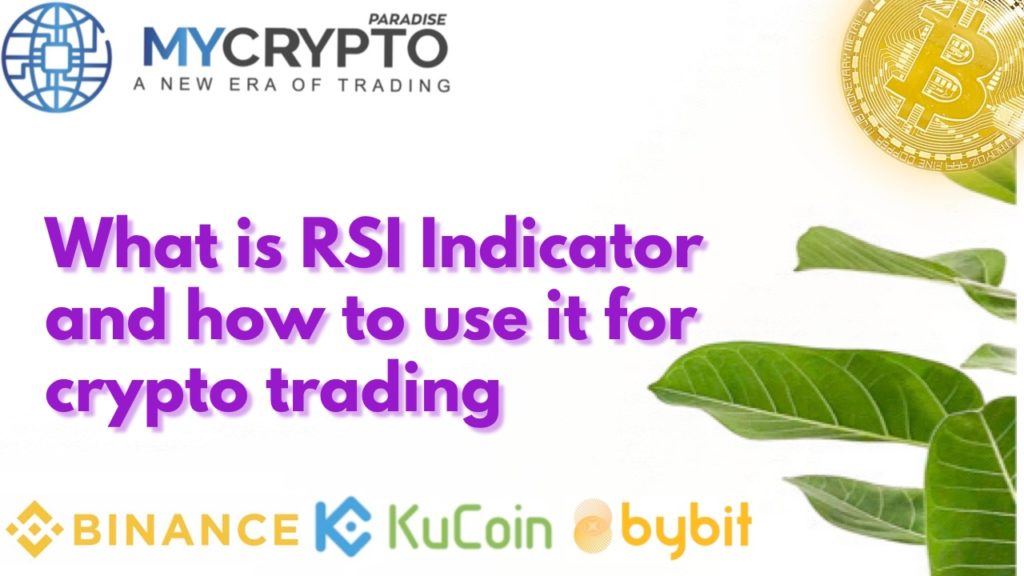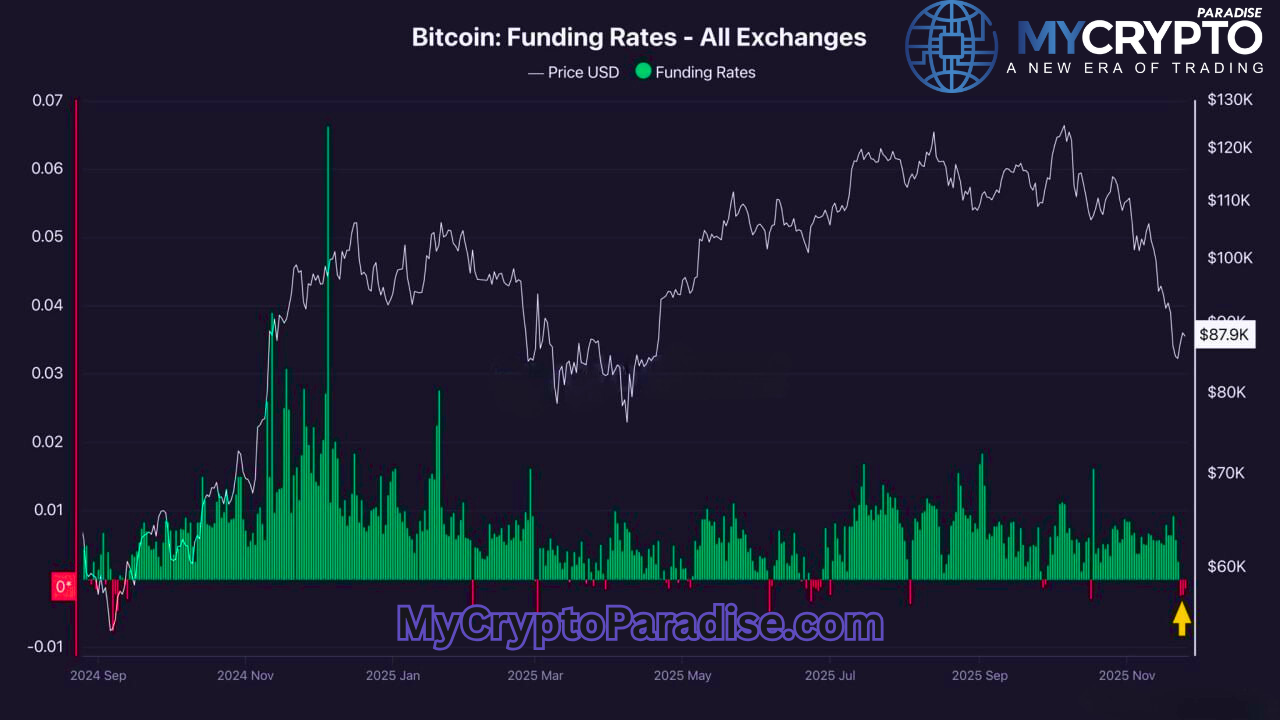As more individuals jump on the cryptocurrency trading bandwagon, it is crucial to comprehend the complexity involved. As it can assist you in making more informed trading decisions and maximizing your profits on the cryptocurrency market. By analyzing these signs, you can acquire a better knowledge of the price fluctuations on the cryptocurrency market.
The Relative Strength Index (RSI) is one of these indicators. This indicator belongs to the momentum oscillators and is the most widely used among them.
Learning the RSI indicator is a great starting point for your cryptocurrency trading journey. However, we will recommend not to start trading before learning all the fundamentals first. In case you can’t find the time or find understanding these indicators too challenging than fear not, we are here to offer help.
At MyCryptoParadise we offer trading signals for cryptocurrency pairs traded on exchanges such as KuCoin, Binance, OKex and others. Not only that, but MyCryptoParadise also provides insights via educational trading analysis on platforms such as
TradingView, Youtube, Telegram and Facebook and Instagram.
We also have Free telegram channels where we provide our FREE updates and analysis on cryptocurrencies such as BTC, ETH and other popular altcoins are also available to the general public.
We also provide you free access to other information. There are also free market updates.
So, what are you waiting for join our group right now!
1. My Binance Paradise – https://t.me/MCP_binance
2. My KuCoin Paradise – https://t.me/MCP_KuCoin
We are offering a special discount to all eager folks who want to join our premium groups .
Use to the discount code BESTTRADERS20% to get an exclusive 20% discount on your ParadiseFamilyVIP membership today! (Check the reviews from our happy clients!). Don’t wait any longer and use the coupon code before it expires!
Now let’s get back to the article. Momentum oscillators are a set of indicators that indicate whether the market is overbought or oversold. Although these indicators are based on pricing, their scaling allows them to swing between high and low values (0-100).
Now that you understand how momentum indicators function, it will be much easier to grasp the notion of the RSI indicator.
The RSI indicator determines the momentum and rate of speed of an asset’s price based on its movements.
In this article, you will learn about the RSI indicator and how to apply it for cryptocurrency trading.
What is the RSI Indicator?
As was said earlier, the acronym RSI stands for “Relative Strength Indicator,” and it is often considered to be one of the most useful indicators for trading cryptocurrencies. J. Welles Wilder Jr., who is widely regarded as the creator of technical indicators for trading, first presented it to the public in the year 1978.
The Relative Strength Index (RSI) is an indicator that analyzes momentum, the price of cryptocurrencies (it is dependent on the closing price), and the pace of price change. This indicator will thus let you know when cryptocurrency assets have been overbought or oversold by informing you of the variables discussed above.
Traders make use of the RSI indicator to attempt to forecast the price of cryptocurrencies in the future. Traders who understand how the indication works may obtain a reasonably accurate picture of future price movements. Despite the fact that the indicator might occasionally lead to incorrect conclusions, it continues to be used widely. When doing technical analysis, RSI is a very useful indicator to keep an eye on.
Traders place a lot of faith in the RSI indicator since it can accurately detect market signals and determine whether the market is bullish or bearish. The relative strength index (RSI) is a line graph that fluctuates between two extremes and has a score that may vary from 0 to 100.
The market is considered to be in an oversold state when the Relative Strength Index (RSI) falls below 30 percent. When the Relative Strength Index (RSI) rises beyond 70 percent, on the other hand, the market is seen as being in an overbought state.
What is the formula that you use to calculate RSI?
Despite the fact that you won’t have to physically punch down the figures to calculate RSI, it is still good practice to grasp the math that lies behind it. Because having a comprehension of the formula will provide you with some illumination about the functioning of the market.
Now that we have everything out of the way, let’s look at the formula and try to figure out what it implies.
RSI = 100 – 100 / (1 + RS)
If you examine the above formula very carefully, you will see that the letter ‘RS’ is written inside it. In the RSI formula, what does the RS stand for exactly?
The relative strength index (RS) is calculated by taking the average of absolute price increases during the most recent 14 periods or candles and dividing that figure by the average of absolute price decreases.
This demonstrates to you that the RSI indicator relies on the change in price as its primary data point. The relative strength index (RSI) compares the size of price increases to the magnitude of price falls over a predetermined period of time. We suggest that you go with the default settings for the RSI, which is 14 since this is the usual RSI period. The parameters for an RSI chart for cryptocurrency are identical to those for any other kind of market.
How to Read the Relative Strength Index Indicator?
The values of the RSI are represented by numbers. The readings provide us with information, and an asset is either “overbought” or “oversold” when it reaches one of those two extremes. Overbought conditions are indicated by an RSI value of more than 70, while oversold conditions are indicated by a value of less than 30.
- RSI Value >70% = Overbought
- RSI Value <30% = Oversold
If an asset’s overbought status is more than 70, it indicates that the asset is appreciating and has the potential to decline further. If an asset has been oversold by 30 percent, it indicates that it is declining and has the potential to appreciate again.
When used in isolation, these factors have the potential to produce undesirable consequences.
Instead, continue reading to get an understanding of some of the most effective applications of the RSI, which will give you an advantage when you are using it.
When paired with other indications, the indicator performs to its highest potential. For instance, the Relative Strength Index (RSI) in conjunction with volume can tell you whether the volume crested at numerous places to explain the upward price movement, or if it merely peaked once and is likely to break down. This may help you determine if the price rise is justified.
When is it appropriate to put our faith in the RSI indicator?
When you notice the price moving in a range, signals are generally going to be more important. When a price is said to be “ranging,” it indicates that it is fluctuating side to side within a certain zone, generating resistance above and support below. It is also possible to speak of the market as being “sideways” when the price activity is contained inside a range. There are simply no notable shifts in any direction, either upwards or downwards, and there is no continuity.
When the price is trending, which means it is making new highs or new lows, the accuracy of the Relative Strength Index (RSI) decreases. Trending prices can be caused by either bullish or bearish market conditions. It’s feasible that the trend will head in either direction. Both outcomes are possible. Mainly because using the RSI to forecast where the market will end while it is making new highs is impossible when the market is reaching new highs. And in a similar vein, whenever the market is setting new lows, we can’t forecast how much lower the market will finally go.
RSI is perhaps the most used indicator for cryptocurrency, second only to moving averages; nonetheless, this indicator may be applied to any form of a chart, including stock charts.
How to use the RSI indicator for crypto trading?
The Relative Strength Index (RSI) is an indicator that many cryptocurrency traders include in their trading strategies. A change in trend must be signaled by the indicator before a trading position may be opened. Traders may use it to either go long or short on cryptocurrency assets, depending on the sort of account they currently have for trading cryptocurrency assets. Traders can also use it to hedge their positions.
Users now have the opportunity to wager on the price movement of crypto via the usage of centralized cryptocurrency exchanges. A trader entering the market should be aware that cryptocurrency assets are very unpredictable commodities, and even technical indicators may suggest misleading trends. This is something that traders should be aware of before entering the market.
To take advantage of the RSI indicator while trading cryptocurrencies, you will first need to activate the indicator. The Relative Strength Index (RSI) indicator is available on most trading systems’ price charts. To find “RSI” in the list of technical indicators, just search for it.
Keep an eye on the pricing trends
If the RSI indicator is higher than 50, you should search for chances to enter long trades after waiting for the price to rise higher, which will indicate that a bullish trend is there. However, if the RSI is less than 50, you will have to search for chances to initiate a short position after the price has dropped to confirm the weak trend. This means you will have to put it on hold for the price to drop.
When prices are moving in either a downward or an upward trend, the RSI line will often operate as a support or resistance level. After being recaptured, it will signal that there has been a shift in momentum. Either it will start moving forward again or it will unexpectedly cease gaining momentum.
Spot divergences
When used in combination with the price line of the asset, the Relative Strength Index (RSI) indicator may help you anticipate price shifts in the future. This is a very useful indicator for determining the state of the market, but it must be used with caution since it also has the potential to mislead users, particularly those who are just starting in the cryptocurrency market.
Conclusion
When investors search for buy and sell signals across several markets, including cryptocurrencies, equities, and forex, the RSI is by far the most common indicator that they consult. When the Relative Strength Index (RSI) reaches a value of 30 or below, this tells traders that the market has been oversold and they should purchase.
The Relative Strength Index is a useful tool for mapping out high probability entry positions because of its emphasis on relative strength. Nevertheless, you should rehearse it before acting on it so that you have a higher chance of being accurate.
Also, keep in mind that RSI is not a fail-safe method by any stretch of the imagination. Consequently, including other indicators of technical analysis would be an added benefit to the situation.













